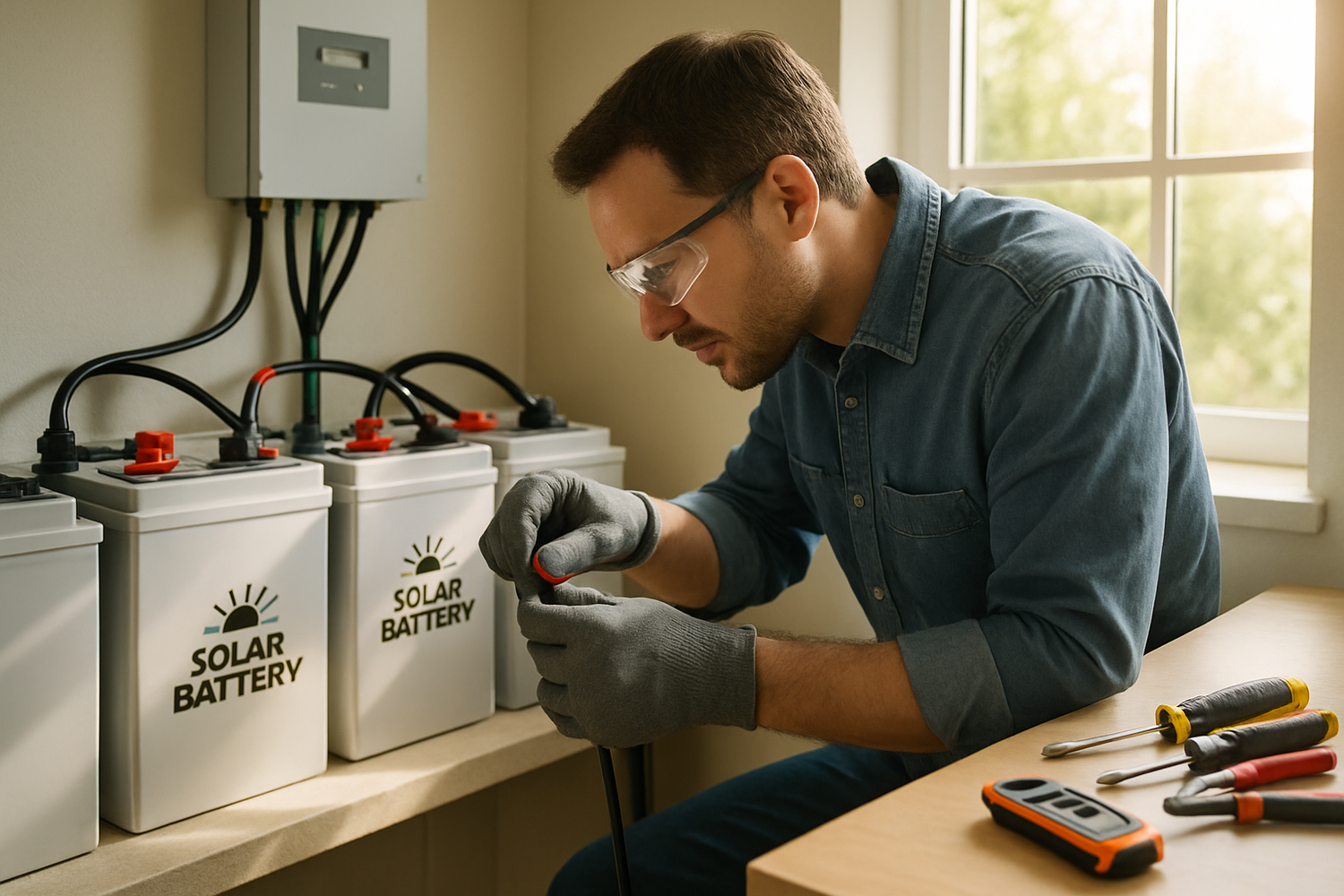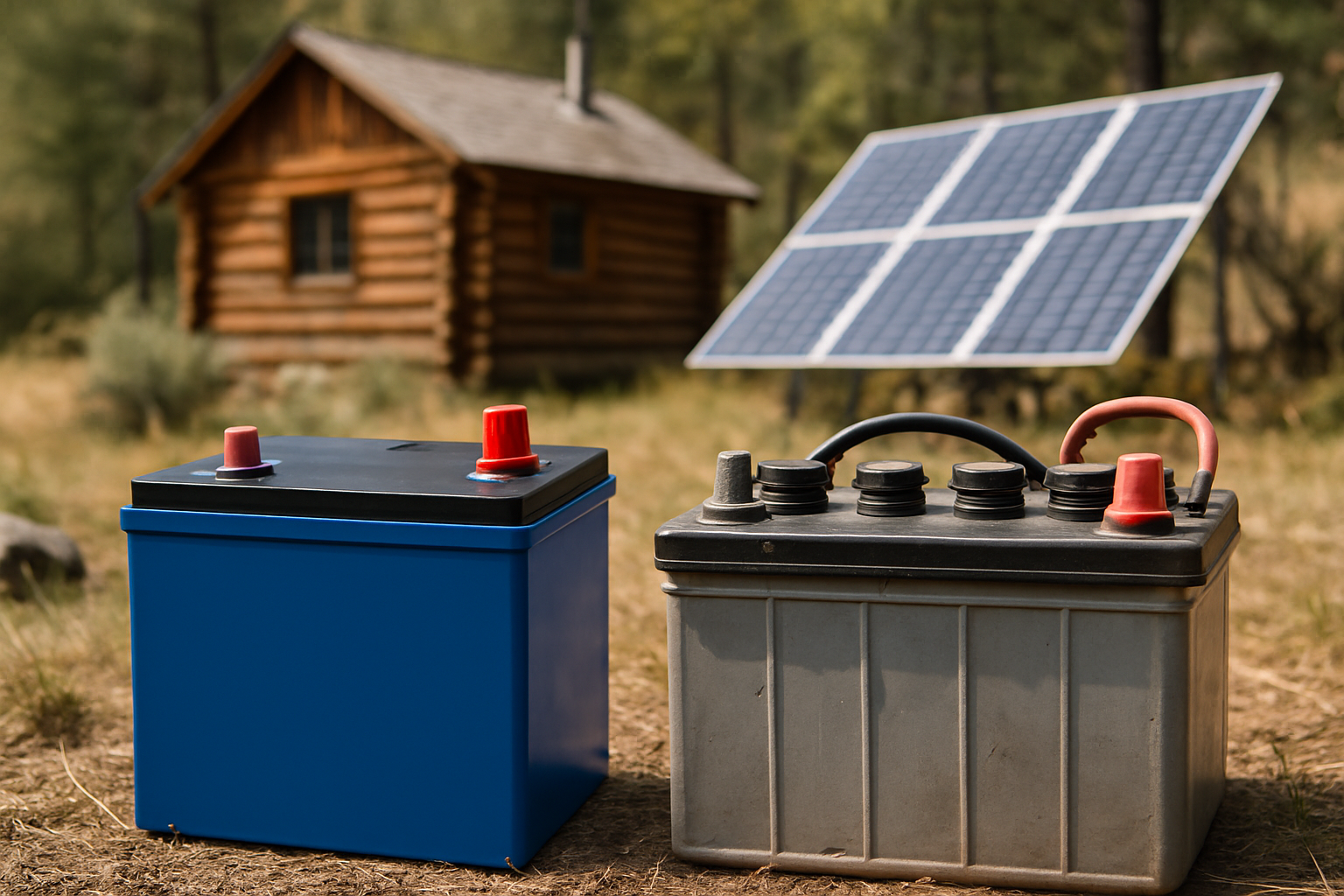Living off-grid offers unparalleled freedom and energy independence. At the heart of most off-grid power systems are batteries, storing the solar energy you collect. These batteries are critical for consistent power, especially when the sun isn't shining. Just like any vital component, they need regular attention to perform optimally and last for many years. Establishing a weekly battery care routine protects your investment and ensures a reliable energy supply for your home.
The Foundation of Off-Grid Battery Longevity
Why Regular Care Matters
Batteries in off-grid systems face unique challenges. They often endure deeper discharge cycles and varying charge rates compared to grid-tied systems. Without consistent care, their capacity can degrade faster, leading to reduced performance and premature replacement. A proactive approach to maintenance helps you identify potential issues early, preventing costly breakdowns and extending the operational life of your entire power system. For instance, the integration of battery storage systems with distributed solar PV can significantly increase self-consumption and reduce reverse power flows into the local grid by shifting produced energy. This highlights the importance of batteries in optimizing energy use. According to the IEA's "Next Generation Wind and Solar Power" report, cost reductions in smart-home and battery technology are changing consumer incentives for generating their own power, making proper maintenance even more crucial for maximizing these benefits.
Understanding Your Battery System
Before you begin a care routine, you need a clear understanding of your specific battery setup. Most modern off-grid systems utilize advanced lithium iron phosphate (LiFePO4) batteries. These batteries offer high performance, safety, and reliability. However, regardless of the type, knowing your battery's specifications – such as voltage, capacity (Ah), and recommended operating temperatures – is fundamental. Refer to your battery manufacturer's manual for precise guidelines. Understanding how your solar panels, charge controller, and inverter interact with your batteries is also key to effective maintenance.
Your Weekly Battery Health Checklist

Visual Inspections and Environmental Checks
A quick visual check can reveal many potential problems. Dedicate a few minutes each week to these simple steps:
- Cleanliness: Ensure battery terminals and surfaces are free of dust, dirt, and corrosion. A clean battery operates more efficiently.
- Connections: Gently check all cable connections for tightness. Loose connections can cause resistance, heat buildup, and power loss.
- Physical Damage: Look for any signs of swelling, cracks, or leaks on the battery casing. These can indicate serious internal issues.
- Ventilation: Confirm that the battery compartment has adequate airflow. Proper ventilation prevents overheating, which can shorten battery life.
- Temperature: Verify that the ambient temperature around your batteries falls within the manufacturer's recommended range. Extreme temperatures negatively impact performance and longevity.
Monitoring Performance Metrics
Modern off-grid systems often include battery monitoring systems (BMS) or smart inverters that provide real-time data. Make it a weekly habit to review these metrics:
- State of Charge (SoC): Check the current percentage of charge. Consistently low SoC can stress batteries.
- Voltage: Monitor the overall battery bank voltage. Significant deviations can indicate an issue with individual cells or the charging system.
- Current (Charge/Discharge): Observe the current flowing into and out of your batteries. Unusual spikes or drops might signal a problem.
- Temperature Readings: If your system provides individual cell temperature data, check for any cells running significantly hotter than others.
- Cycle Count: Some advanced BMS track charge/discharge cycles. While not a weekly check, understanding your system's typical cycling helps you gauge its usage over time.
Regularly reviewing this data helps you understand your system's health and detect anomalies before they escalate. The Oglala Lakota College project demonstrated that understanding fundamental concepts makes managing such systems straightforward, even for complex off-grid setups.
Optimizing Charging and Discharging Cycles
Smart Charging Practices
Effective charging is paramount for battery health. Your charge controller plays a crucial role in regulating the power from your solar panels to your batteries. Ensure its settings are correct for your battery type. Overcharging or undercharging can both cause damage. Smart charging platforms, often found in integrated energy storage systems, can manage charging points and other loads, optimizing energy flow. IRENA's "Innovation Outlook: Smart charging for electric vehicles" highlights how such platforms can coordinate charging to maximize efficiency and system service. While this report focuses on EVs, the principle of intelligent charge management applies directly to off-grid home batteries.
Consider these practices:
- Absorption and Float Stages: Confirm your charge controller is properly executing these stages to fully charge your batteries without overstressing them.
- Temperature Compensation: If your charge controller supports it, ensure temperature compensation is enabled. This adjusts charging voltage based on battery temperature, which is especially important in environments with significant temperature swings.
- Seasonal Adjustments: You might need to make minor adjustments to your charging parameters based on seasonal solar availability and energy demand.
Avoiding Deep Discharges
Deeply discharging your batteries repeatedly significantly reduces their lifespan. While LiFePO4 batteries tolerate deeper discharges better than lead-acid, consistently draining them below 20% SoC is not recommended. Aim to keep your batteries above 50% SoC whenever possible. If your system allows, set low-voltage disconnect (LVD) points to prevent excessive discharge. This protects your batteries from damage and ensures you always have a reserve of power.
Advanced Tips for Sustained Performance
Temperature Management
Temperature is a major factor affecting battery performance and lifespan. Ideal operating temperatures for most batteries are between 15°C and 35°C (59°F and 95°F). Extreme heat accelerates degradation, while extreme cold reduces capacity and efficiency. If your batteries are in an unconditioned space, consider insulation or heating/cooling solutions to maintain a stable temperature. For example, a well-insulated battery box can help regulate temperatures in both hot and cold climates.
Record Keeping and Trend Analysis
Maintain a simple log of your weekly observations. Note down voltage readings, SoC, any unusual observations, and actions taken. This record becomes invaluable for identifying long-term trends and diagnosing intermittent issues. Over time, you will develop a clearer picture of your battery system's behavior and can anticipate maintenance needs more effectively. This data-driven approach moves you from reactive fixes to proactive care.
| Task | Frequency | Purpose |
|---|---|---|
| Visual Inspection (cleanliness, connections, damage) | Weekly | Identify immediate physical issues |
| Check Battery Voltage & SoC | Weekly | Monitor overall health and charge level |
| Monitor Charge/Discharge Current | Weekly | Detect unusual power flows |
| Verify Ambient Temperature | Weekly | Ensure optimal operating conditions |
| Review Charge Controller Settings | Monthly/Seasonally | Confirm correct charging parameters |
| Record Keeping | Weekly | Track performance trends |
Empowering Your Off-Grid Lifestyle
Implementing a consistent weekly battery care routine is a small effort with significant long-term rewards. It safeguards your investment in solar energy, ensures uninterrupted power for your off-grid home, and contributes to true energy independence. By dedicating a short time each week to these checks and optimizations, you will extend your battery lifespan, enhance system reliability, and enjoy the peace of mind that comes with a well-maintained off-grid power solution. Our commitment is to provide reliable and scalable energy solutions, helping you achieve this energy independence through high-performance, safe, and reliable lithium iron phosphate batteries and integrated energy storage systems.
Frequently Asked Questions
How often should I perform a full battery equalization?
LiFePO4 batteries generally do not require equalization in the same way lead-acid batteries do. Their internal Battery Management System (BMS) handles cell balancing. Refer to your specific battery manufacturer's guidelines, but for most LiFePO4 systems, manual equalization is rarely, if ever, needed.
What should I do if I notice corrosion on my battery terminals?
If you find corrosion, first ensure your system is safely disconnected. Then, use a wire brush and a mixture of baking soda and water to clean the terminals. Rinse with clean water and dry thoroughly before reconnecting. Applying a thin layer of dielectric grease can help prevent future corrosion.
Can I mix different types or ages of batteries in my off-grid system?
No, it is strongly advised against mixing different battery chemistries, capacities, or even significantly different ages within the same battery bank. This can lead to imbalances, reduce overall efficiency, and potentially damage the batteries. Always use identical batteries for optimal performance and safety.





Leave a comment
All comments are moderated before being published.
This site is protected by hCaptcha and the hCaptcha Privacy Policy and Terms of Service apply.